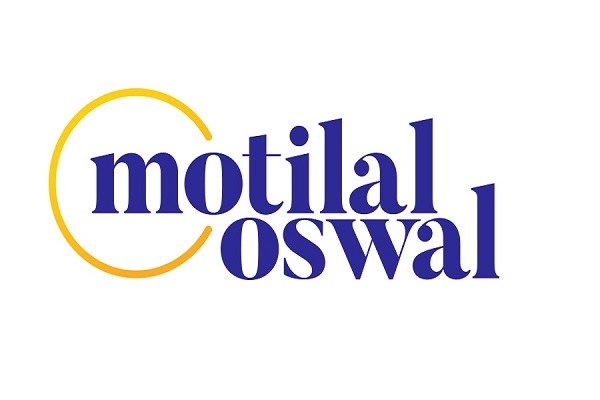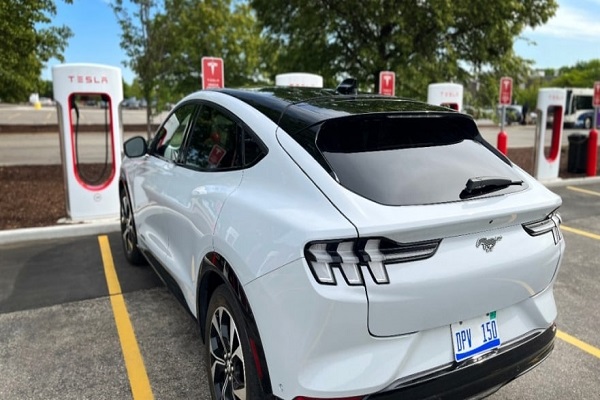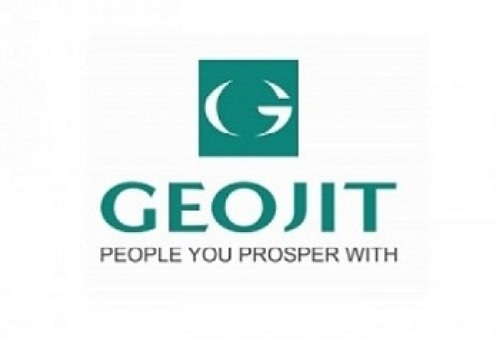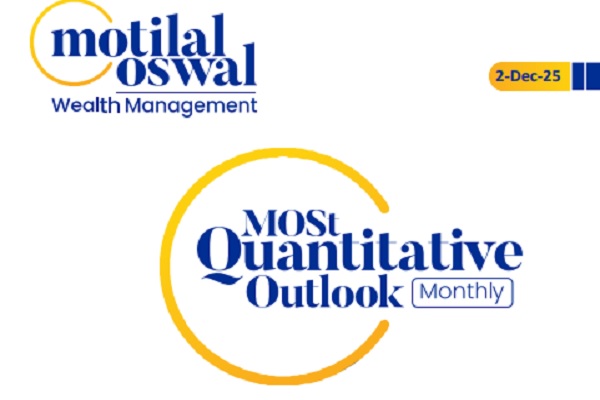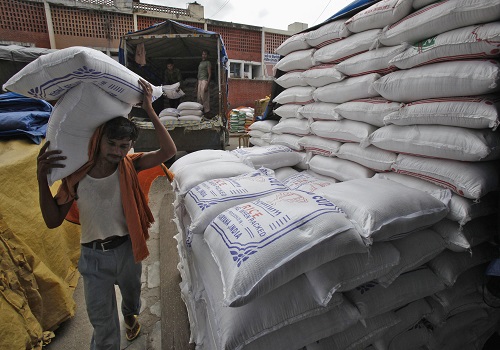Voices: Heavyweights weigh on earnings; decent spread performs a balancing act - Motilal Oswal Financial Services Ltd
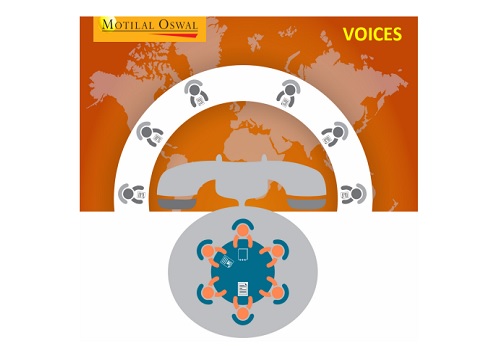
In this report, we present the detailed takeaways from the 1QFY23 conference calls with various company managements, as we refine the essence of India Inc.’s ‘VOICES’
* Corporate earnings in 1QFY23 missed expectations after several quarters. A few cyclical heavyweights led the aggregate miss even as spread of the earnings and accompanying corporate commentaries were good. Healthy monsoons and a normal festive season after two years should augur well for the consumptionoriented sectors. However, growth is still lopsided and is being fueled by BFSI. As the benefit of the recent moderation in commodity cost starts to accrue in 2HFY23E, we expect other sectors such as Consumer, Autos and Cement to contribute too.
* Most of the banks have guided for a sustained recovery in growth momentum propelled by continuous traction in retail, business banking and SME segments. Corporate segment growth too is likely to accelerate gradually, primarily driven by working capital loans while revival in capex is likely to occur over 2HFY23E. Margins are anticipated to witness a positive bias in the near term with banks having a high mix of CASA and floating rate loans to be better placed. In NBFCs, management remains watchful of the impact on NIM and credit growth for nonbank lenders. Hence, it will be important to monitor the impact on the stated parameters for non-bank lenders.
* For Consumer sector, performance was driven by price hikes, due to sustained high commodity inflation, and a return to normalcy in terms of mobility. Rural growth continued to remain weak but several company management teams believe green shoots are emerging for rural demand and a combination of good monsoons and higher government subsidies should provide the necessary fillip needed. While commodity costs have shown signs of stabilization towards end1QFY23, the environment remains volatile. Management guidance for most companies suggests that gross margin pressures are likely to continue in 2QFY23, but should stabilize, if not improve notably, in 2HFY23E.
* IT sector saw some moderation in growth on the high base of FY22. Though demand environment remained strong, a few companies noted small pockets of demand weakness led by ongoing macro headwinds, especially in retail. Digital transformation and cloud migration remained in focus for enterprises to fuel their growth. The companies’ strong order book and pipeline render comfort on near-term growth. Long-term growth too is expected to remain resilient because of prominent digital and cloud transformation initiatives by clients.
* In the Metals space, most of the companies highlighted: a) reduction in coking coal costs to reflect in 3QFY23E results and b) steel demand has accelerated in Jul’22 v/s 1QFY23. Inventory is high across the board and working capital has been locked due to high inventory and expensive coal payments.
* In Healthcare, companies indicated softening of raw material and freight costs v/s previous quarters. Having said this, they also indicated that costs would remain at elevated levels v/s pre-Covid period. The base business erosion subsided in the US generics segment. However, managements look forward for potential launches from 2HFY23 onwards, which would not only offset price erosion but also enable growth to some extent in the US generics segment.
Autos
* Domestic 2W demand is improving MoM but exports are seeing some stress due to issues in export destinations. The 2W OEMs are facing chip shortages thus hurting volumes. PV demand remained steady, and new launches are keeping the strong momentum going. CV demand has also remained strong supported by the government’s push towards infrastructure. Commodity prices are seeing a softening trend with full benefit visible in 2HFY23E. The upcoming festival season is expected to be positive for the auto industry after two dull years, severely affected by Covid-19.
Cement
* A majority of the management teams indicated some softness in demand and cement prices with pick-up in monsoon. However, they remained positive on the underlying demand growth of the sector, which will be driven by a pick-up in infrastructure, housing and real estate segments. Exit cement price in Jun’22 was 3-5% below 1QFY23 average and there was a further decline of INR5-10/bag across markets. Energy cost is expected to peak in 2QFY23 as petcoke price has declined from its peak level. As such, managements guided for timely completion of their ongoing expansion plans and announced the next phase of expansions
Chemicals Specialty
* Raw material prices continued to remain high in 1QFY23, due to global supply chain issues. The higher freight cost was due to container unavailability. EBITDA margin for companies in our coverage universe declined in 1QFY23, as operating costs remained elevated (fuel costs at a record high). However, managements are of the view that supply chain issues have eased, input costs have started normalizing, and future quarters should see a better margin performance. Demand remained strong for almost all the Specialty Chemicals companies (and would continue to do so) with GALSURF seeing some demand cutback in AMET and RoW although the management said that domestic demand remained steady. Managements remain confident on domestic sector growth and have capex planned for the next 2-3 years in line with the same.
Consumer
* Overall performance in 1QFY23 was driven by price hikes, due to sustained high commodity inflation, and a return to normalcy in terms of mobility. Growth was largely led by Discretionaries, which delivered a strong double-digit performance, while most of the Staples companies saw single-digit growth, due to weak volume growth and a base that was relatively less favorable. Rural growth continued to remain weak but several company management teams believe green shoots are emerging for rural demand and a combination of good monsoons and higher government subsidies should provide the necessary fillip needed. Urban centers continued to show strong demand especially even in the case of categories which are more discretionary in nature. While commodity costs have shown signs of stabilization towards the end of 1QFY23, the environment remains volatile. The management guidance for most companies suggests that gross margin pressures are likely to continue in 2QFY23, but should stabilize, if not improve meaningfully, in 2HFY23E.
Financials
Banks
* Most of the banks have guided for a sustained recovery in growth momentum propelled by continuous traction in the retail, business banking and SME segments. Corporate segment growth too is likely to witness a gradual pick-up primarily driven by working capital loans while revival in capex is likely to occur over 2HFY23. Margins are likely to witness a positive bias in the near term with banks having a high mix of CASA and floating rate loans to be better placed. Treasury performance was better than expected and is likely to moderate as bond yields have softened post Jun’22. Earnings outlook remains resilient with continuous improvement in asset quality as slippages (ex of restructuring) continued to moderate while SMA book too stands at benign level which provides comfort on incremental slippages. A high PCR coupled with additional provisions buffer would keep the credit cost benign.
NBFC
* Among lending institutions, the broader guidance is for strong disbursement growth in FY23 and improvement in asset quality leading to benign credit costs. Despite the increase of ~90bp in policy repo rate (during 1QFY23), the cost of borrowings (CoB) either remained stable or exhibited marginal decline except for the mortgage heavyweights (such as HDFC/LICHF), which reported a sequential increase in their CoB. For others, increase in CoB will start reflecting from 2QFY23E onwards. Margins, therefore, either remained stable or posted marginal sequential improvement for the vehicle financiers while there was a minor sequential deterioration in margins for large mortgage lenders, such as HDFC and LICHF, because of a lag in transmission of higher borrowing costs. Most of the lenders reported an improvement (or stability) in asset quality while there were a few notable exceptions. Aavas and LICHF (contrary to our expectations) reported deterioration in their asset quality, owing to slippages from the restructured pool. The management remains watchful of the impact on NIM and credit growth for non-bank lenders. Hence, it will be important to monitor the impact on the stated parameters for non-bank lenders.
Healthcare
* Companies indicated softening of raw material and freight costs v/s previous quarters. Having said this, they also indicated that costs would remain at elevated levels v/s pre-Covid period. The base business erosion subsided in the US generics segment. However, managements look forward for potential launches from 2HFY23 onwards, which would not only offset price erosion but also enable growth to some extent in the US generics segment. Companies that have completed remediation measures remain hopeful of the USFDA inspection to have successful compliance at respective sites. Companies having exposure to the domestic formulation segment have been able to take price hikes linked to inflation in portfolio under National List of essential medicines (NLEM). Some management teams have expanded field force to not only add new divisions but also expand existing divisions to drive outperformance in domestic formulation segment. Overall, the outlook is likely to be better in the coming quarters because of new launches and some respite on cost pressures.
Logistics
* Logistics companies in our coverage universe clocked a 31% YoY growth in revenue in 1QFY23, on a low base of 1QFY22, which was severely impacted by the second Covid wave. Growth was driven by strong volumes and elevated freight rates. With higher volume growth in 1QFY23, companies were able to increase freight prices, and thus saw only a marginal drop in gross margin (down 160bp YoY and 200bp QoQ to ~31%). With a structural shift in the formalization of the sector (~90% of the Logistics sector is unorganized), supported by stricter implementation of GST and mandatory e-invoicing, the addressable market size for the organized operators will increase significantly. In order to garner a higher market share, companies have announced aggressive investment plans for growing their fleet and storage facilities. Companies have been optimistic about volume growth in their post-earnings call, and expect the momentum to continue through FY23.
Metals
* In the Metals space, most of the companies highlighted: a) reduction in coking coal costs to reflect in 3QFY23E results and b) steel demand has accelerated in Jul’22 v/s 1QFY23. Inventory is high across the board and working capital has been locked due to high inventory and expensive coal payments. Both these are likely to come-off over the next six months. On the non-ferrous side, thermal coal costs continue to rise and management expects the same to reflect in forthcoming results. Global macros remain challenging with slowdown in China, inflation in the US and Russia/Ukraine war keeping demand low in Europe.
Oil & Gas
* For OMC’s and Reliance, while refining business was very strong in Q1FY23 led by high GRM’s, it would be softer in 2HCY22 due to flattening of SGRM. Marketing margin losses will be narrowed in 2HCY22 from very high losses in 1QFY23 led by cooling-off of the crude prices to ~USD95/ bbl currently from as high as USD120/ bbl in Jun’22. Petchem business will be modest led by moderate demand and margins. GAIL’s guidance for increase in gas trading volumes by 5-6mmscmd in FY23E and commissioning/ ramp-up of various fertilizer plants would increase its volumes by Oct’22. GSPL’s volume is expected to remain muted in 2QFY23 as well led by high Spot LNG prices and the industries shutdown in the Morbi region. For CGDs, while the high input APM gas price remains a concern in 2HCY22, which would keep their margins under check, pent-up demand is coming up with strong volumes both in CNG as well as PNG, which would balance their overall profitability.
Real Estate
* In 1QFY23, the top 12 listed companies witnessed seasonal declines of 16% QoQ in pre-sales. Most of the companies have identified strong launch pipeline for the year and continued to target double- digit growth in bookings in FY23. From coverage perspective, companies such as LODHA and GPL remain aggressive on business development too with an aim to maintain the growth run-rate in medium term. In terms of pricing, companies have comfortably passed on the cost inflation and intend to take further price hikes going ahead.
Retail
* Companies stated that a strong recovery was witnessed during the quarter on the back of improved footfalls and receding impact of Covid. As a result, companies are now resuming with their store expansion plans.
Technology
* IT sector saw some moderation in growth on the high base of FY22. Though demand environment remained strong, a few companies noted small pockets of demand weakness led by ongoing macro headwinds, especially in retail. Digital transformation and cloud migration remained in focus for enterprises to fuel their growth. The companies’ strong order book and pipeline render comfort on near-term growth. Long-term growth too is expected to remain resilient because of prominent digital and cloud transformation initiatives by clients. 5G, IoT, Data Analytics, Cybersecurity, and AI remain in traction. Companies should sustain their margin profile in FY23 through increased fresher additions, reduced sub-contractor expenses, improvement in operational efficiencies and leverage. Pricing environment remained strong which remains the key lever.
Telecom
* Companies have reiterated their expectations of ARPUs to improve going ahead aided by another round of tariff hikes that would take place later in the calendar year. On the 5G rollout, companies have indicated the near-term capex to go up backed by incremental spends on setting up the infrastructure for commercial rollout of 5G.
To Read Complete Report & Disclaimer Click Here
For More Motilal Oswal Securities Ltd Disclaimer http://www.motilaloswal.com/MOSLdisclaimer/disclaimer.html SEBI Registration number is INH000000412
Above views are of the author and not of the website kindly read disclaimer
